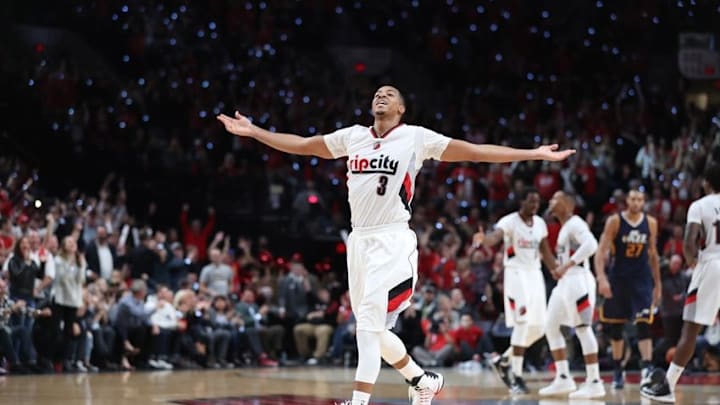First Three Cons

1. Lillard = Not so Clutch
This has been an issue not just in 2017, but for the whole season. I’ll give you dessert first before the vegetables. He’s boasting the highest TS% (58.3), FG% (44.5) and FT% (89.6) for his career while having a PER of 23.0 – making this his most efficient season to date.
Now time for the veggies. ‘Lillard Time’ has been close to non-existent compared to his normal standards. In games with 2 minutes left in the game and a 5 point differential or less, Lillard has shot an abysmal 36.8% from the field. You probably don’t want to know what he is from beyond the arc, but I’ll tell you anyway. 14.3%.
This doesn’t even include how poor of a defender he is to have closing games. Something has been off with the Blazers all season long, and the lack of the signature ‘Lillard Time’ (pout while he taps his right wrist) has been evident of that.

2. Chief of Offense?
35, 25 and 64. Those are Aminu’s percentage splits in respect to FG%, 3P% and FT%. Those are all about 10% lower than the league average. He was about an average shooter last year. He could spot up around the arc for spot up threes while the defense focused in on our guards. Aminu’s praise for defense has been mentioned above. But his offense? Clearly not so good.
His weird altered slingshot form is the first thing that irks me. He has an abysmal true shooting percentage of 43.6% and a PER of 9.76. Both are well below the league average and ranks the worst among all forwards in TS%. Secondly, his waist high dribble. Every time he puts the floor on the deck, he’s not creating enough separation on the first step and his head is down trying to bull rush his way to the rim. No surprise that he’s scoring on only 36.4% of his drives this season – worse than Dante Cunningham.
He may be the lone bright spot defensively, but the fact that he’s averaging 3 points less and has a offensive real plus-minus of -2.68 shows that his offense has been detrimental to the team this season.

3. Late Game Execution
10-13 (0.435). That is the record that the Blazers hold this season when it comes to ability to close out games in the clutch. It ranks 21st in the league behind the Phoenix Suns and the New Orleans Pelicans. This has been the combination of many factors, but the microscope comes down to shot selection and defensive execution.
This Blazer defense has proven to have many holes, and the fact that Dame-CJ close most games means should have an efficient offense. This has not been the case. Statistics and metrics show you what has happened, and the eye-test explains how it happened. In this scenario, the Blazers opt to not use Stotts’ ‘flow offense.’ That’s where players read and react off of one another, making it unpredictable – thus it’s hard to defend. Instead they resort to hero basketball with pick and rolls or a simple isolation: easy for a defense to counter. Those two plays are the most common in basketball, and Lillard pulling up from 26 feet may seem pretty if it falls – but 85.7% of the time it doesn’t.
The burden does not fall solely on the players, but the coaches as well. Let’s stop with this basic, late game execution and go back to what makes this team so dangerous.
Stay Tuned for Part 2 Tomorrow.
